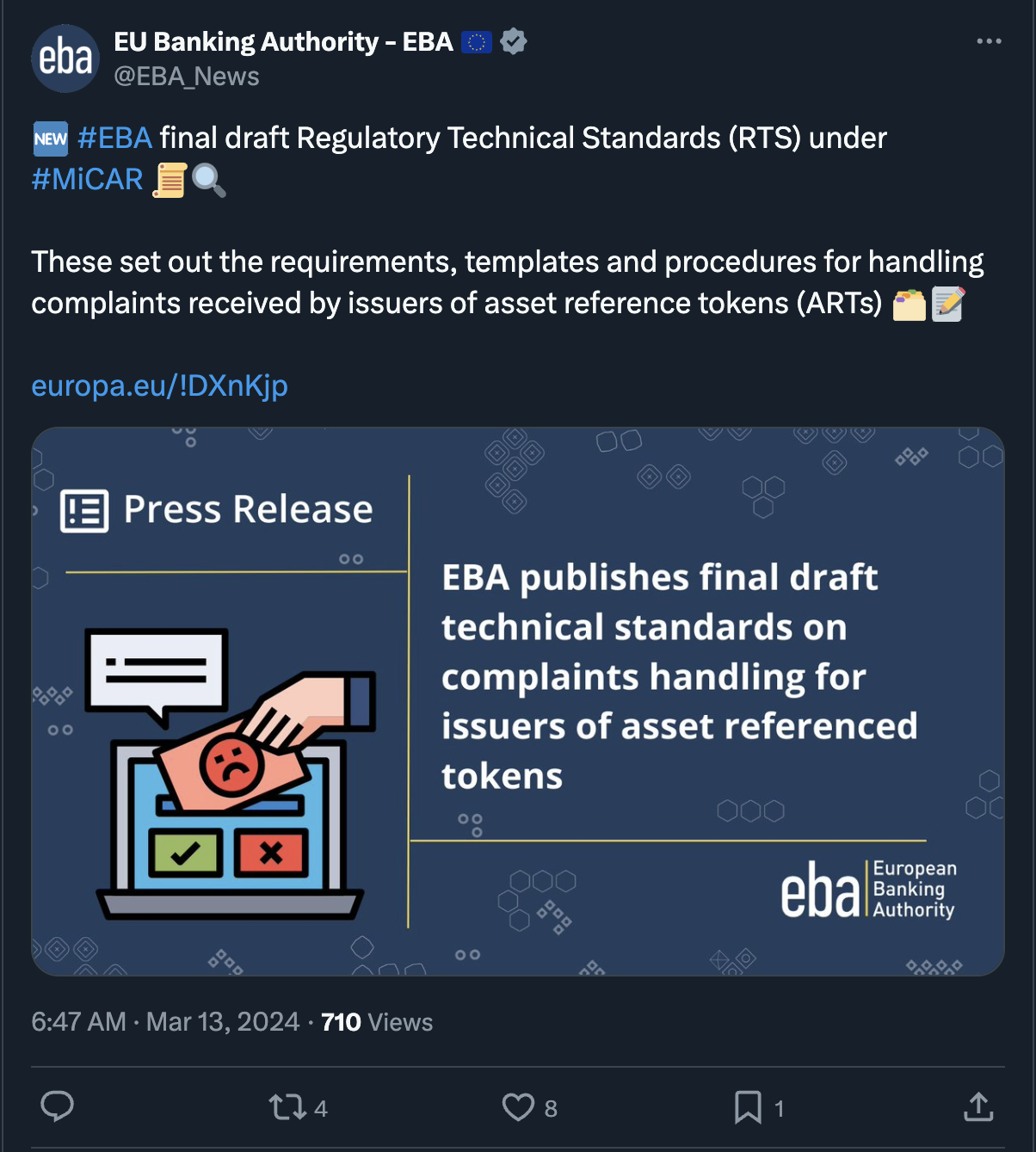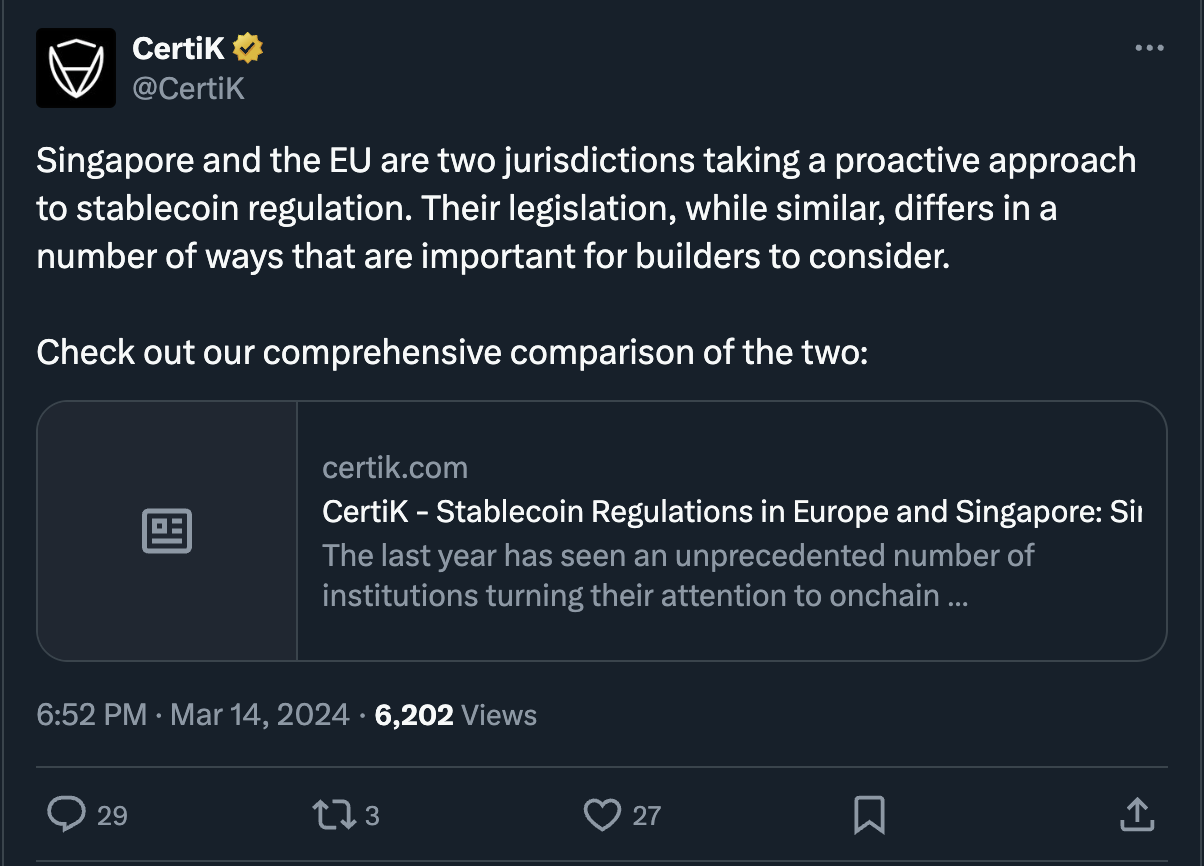EU financial regulators are set to enhance stablecoin oversight by integrating additional regulation guidelines into the Markets in Crypto-Assets Regulation (MiCA) framework. Here's what these new guidelines mean for stablecoin issuers, exchanges, brokers, and users.

(The European Banking Authority on X)
This regulatory framework for stablecoins emerges from a collaborative effort between the European Banking Authority (EBA) and the European Securities and Markets Authority (ESMA). Together, they have consulted on various other Regulatory Technical Standards (RTS) to establish comprehensive rules under MiCA.
The issued Regulatory Technical Standards (RTS) protocol details the “requirements, templates, and procedures complaints received by issuers” of what MiCA defines as asset-referenced tokens. Unlike stablecoins pegged to the value of one currency like the euro or U.S. dollar, asset-referenced tokens (e.g., Libra, later renamed Diem, by Meta) can reference several currencies or other assets, including cryptocurrencies.

According to a document (PDF) from the European Banking Authority (EBA),
“Such a framework should support innovation and fair competition while ensuring a high level of protection of retail holders and the integrity of markets in crypto assets.”
- For stablecoin issuers, the new RTS (PDF) mandates the creation of a detailed complaints management policy. This includes the creation of a dedicated function within their organizations for effective complaint resolution and identifying and mitigating potential conflicts of interest.
- Exchange platforms and third-party entities distributing asset-referenced tokens must inform issuers about any complaints received, ensuring seamless communication and resolution.
- Users and holders of stablecoins are entitled to submit complaints directly to issuers or third-party entities using a standardized template provided by the issuers.
This approach aims to bolster confidence in the crypto market by ensuring transparent communication between issuers and users.
The MiCA regulation as a whole is focused heavily on requirements for stablecoin issuers, as it became imperative after the collapse of Terra’s UST, which raised concerns about their systemic implications.
While MiCA is set to take effect in December, rules for stablecoins will be enforced this summer.


